Innovative Geographic Information System Aims to Strengthen Syndromic Disease Surveillance and Pandemic Preparedness in Kiribati
December 28, 2023
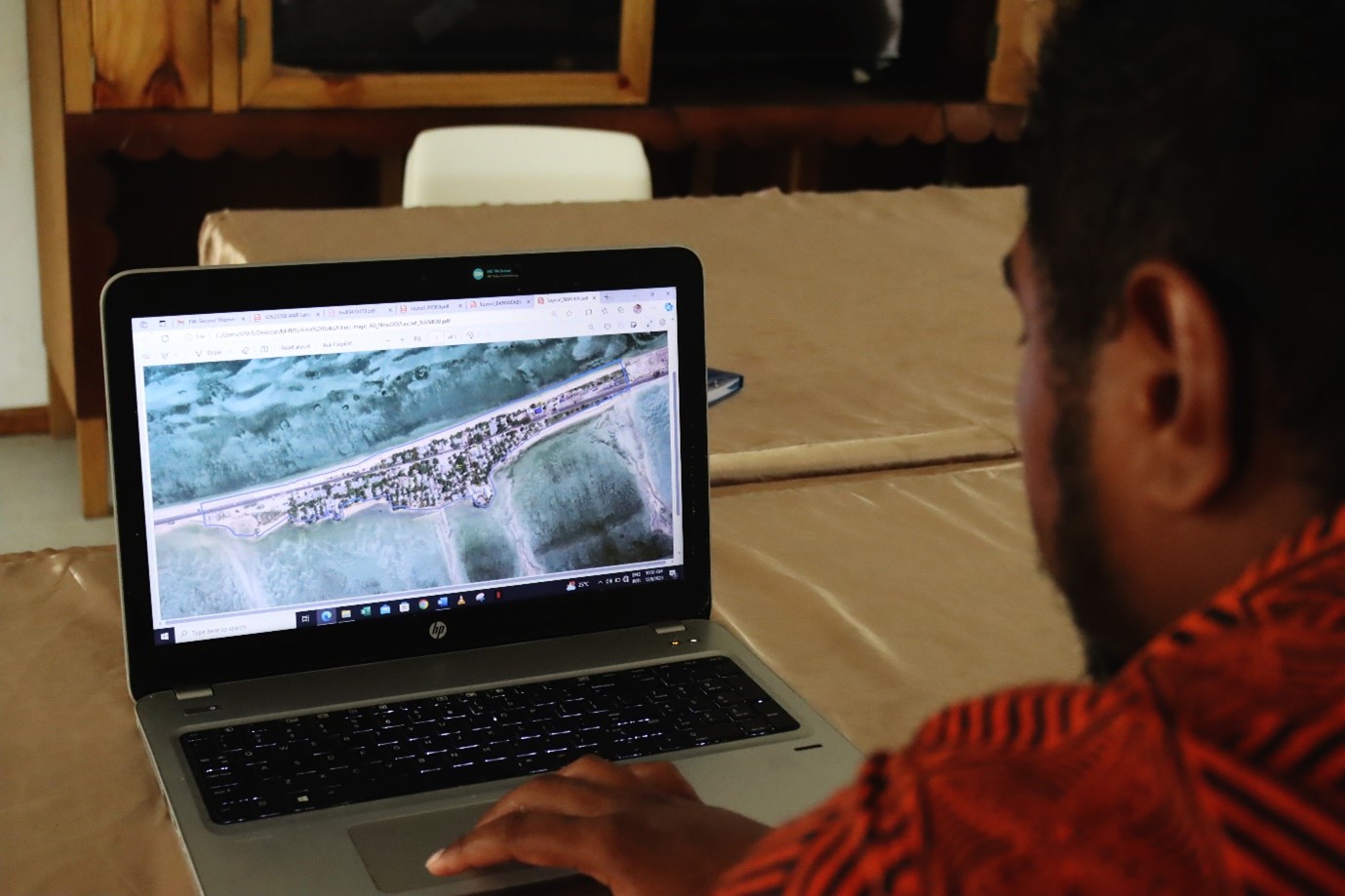
A technician examines an image of one of the numerous atolls in Kiribati using the geographic information system.
The Ministry of Health and Medical Services (MHMS) and UNDP recently launched an innovative new initiative that uses a health-based geographic information system (GIS) to improve syndromic surveillance of diseases and ensure greater pandemic preparedness in Kiribati.
Increasingly used in health administration, GIS is a powerful tool that enables the visualization and analysis of geographic data. This allows insights into relationships among factors such as population density, health care access and disease prevalence. Such information will help facilitate targeted resource allocation, allowing health care officials to identify patterns and correlations in disease spread. GIS also optimizes existing health care infrastructure by analyzing service locations.
The initiative is implemented by the Multi-Country Western Pacific Integrated HIV/TB Programme, which is funded by the Global Fund to Fight AIDS, Tuberculosis and Malaria.
“I wish to acknowledge that this is not an ordinary initiative. It will take disease surveillance capabilities to the next level by embracing digital technology and geographical information systems to bring about efficiency in the way we monitor and respond to diseases,” said Ms. Agnes Naare, Officer-in-charge Secretary for Health, MHMS, at a launch event in Tawara on 8 December 2023.
“This initiative will allow for real time collection, analysis and spatial visualization of data related to serious diseases. This will lead to earlier detection and timely response,” said Ms. Naare.
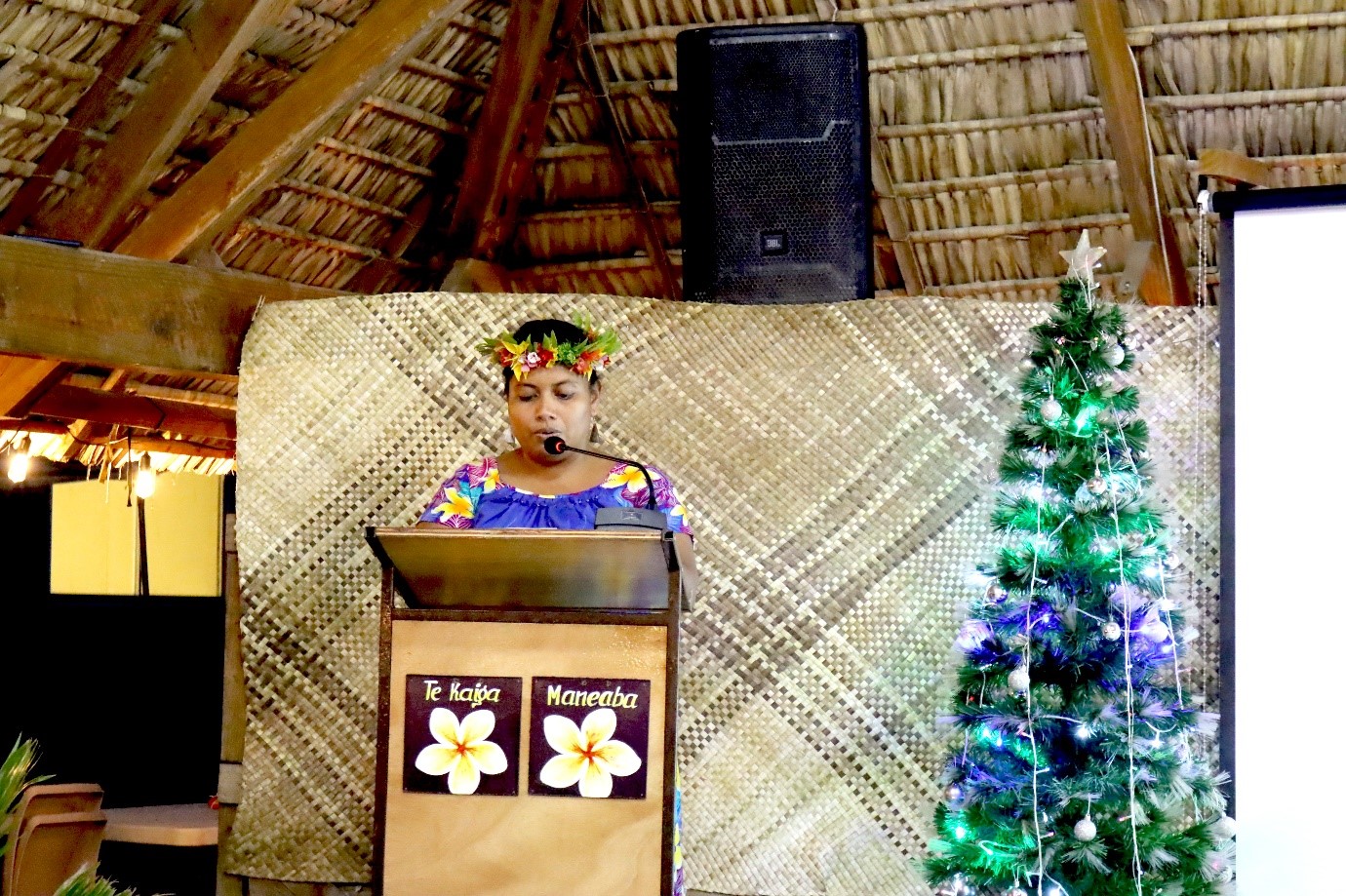
Officer-in-charge Secretary for Health, Ministry of Health and Medical Services Kiribati, Ms Agnes Naare, at a launch event in Tawara on 8 December 2023.
The initiative will contribute to improving the MHMS health promotion programme and is expected to contribute to general improvements to public health in the country – expanding beyond the traditional areas of partnership between UNDP and the Ministry, which have primarily been on tuberculosis (TB), human immunodeficiency viruses (HIV) and sexually transmitted diseases.
The high population density and lack of clean drinking water in many Kiribati communities result in numerous disease outbreaks and airborne illnesses each year, often leading to loss of life, particularly among children.
Funding for the initiative came from the Global Fund’s Covid-19 Response Mechanism. Approval to utilize funds was granted by the Global Fund in October 2022.
In remarks at the initiative’s launch event, Ms. Gayane Tovmasyan, Programme Manager for Multi-Country Western Pacific Integrated HIV/TB Programme at UNDP, emphasized that the use of digital technologies and other innovations will pave the way for greater effectiveness in disease surveillance and health system strengthening.
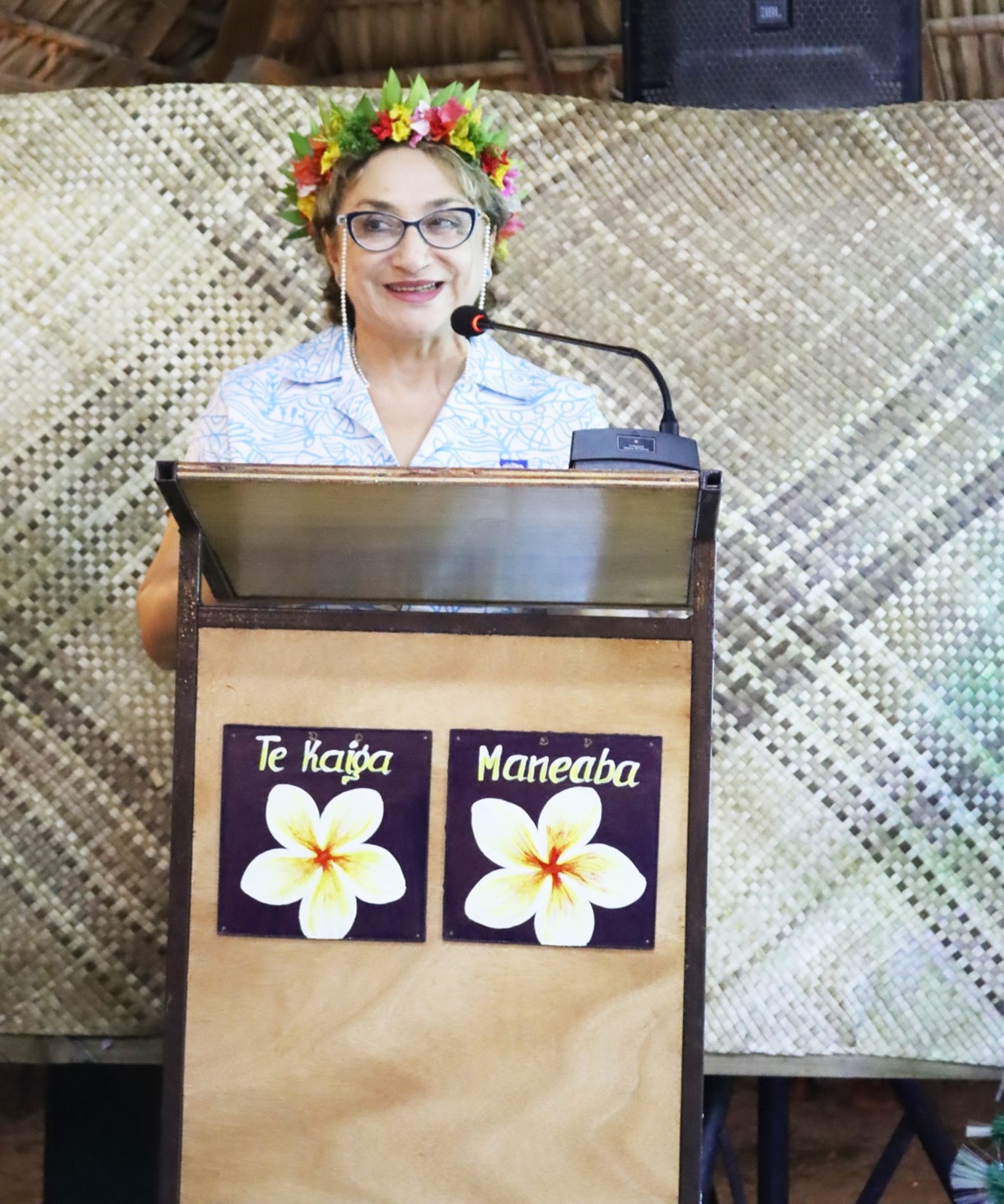
Ms. Gayane Tovmasyan, Programme Manager for Multi-Country Western Pacific Integrated HIV/TB Programme at UNDP Pacific Office.
“This initiative aims to enhance the identification and mapping of health clinics along with their respective catchment areas, utilizing geospatial data and technologies. The goal is to fortify the national disease/syndromic surveillance system, risk analysis, health access and planning, and community profiling. By employing these tools, the initiative seeks to rapidly detect and respond to possible outbreaks,” said Ms Tovmasyan.
By promoting synergies under a universal health coverage and primary health care framework, the efforts aim to help Kiribati achieve its health-related targets within the 2030 Agenda for Sustainable Development.
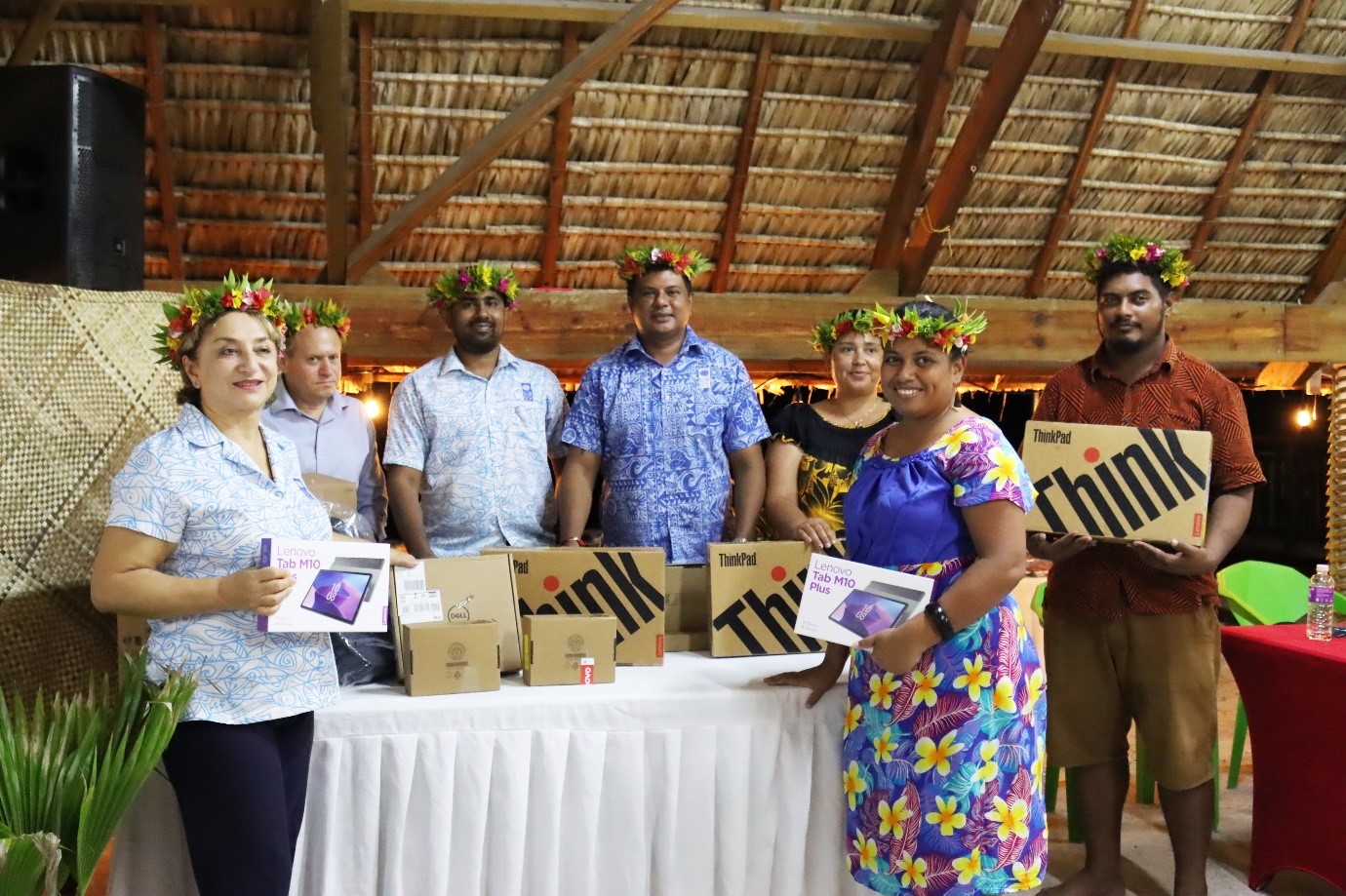
Multi-Country Western Pacific Integrated HIV/TB Programme at UNDP Pacific Office with Ministry of Health and Medical Services Kiribati representatives during the launch of the GIS.
The launch event coincided with a workshop for officials and staff from the MHMS on the GIS system.
Mr. Kamatie Tekena, a GIS officer at the MHMS and one of the participants of the workshop, noted the importance of GIS in analyzing and interpreting data to strengthen disease prevention and response.
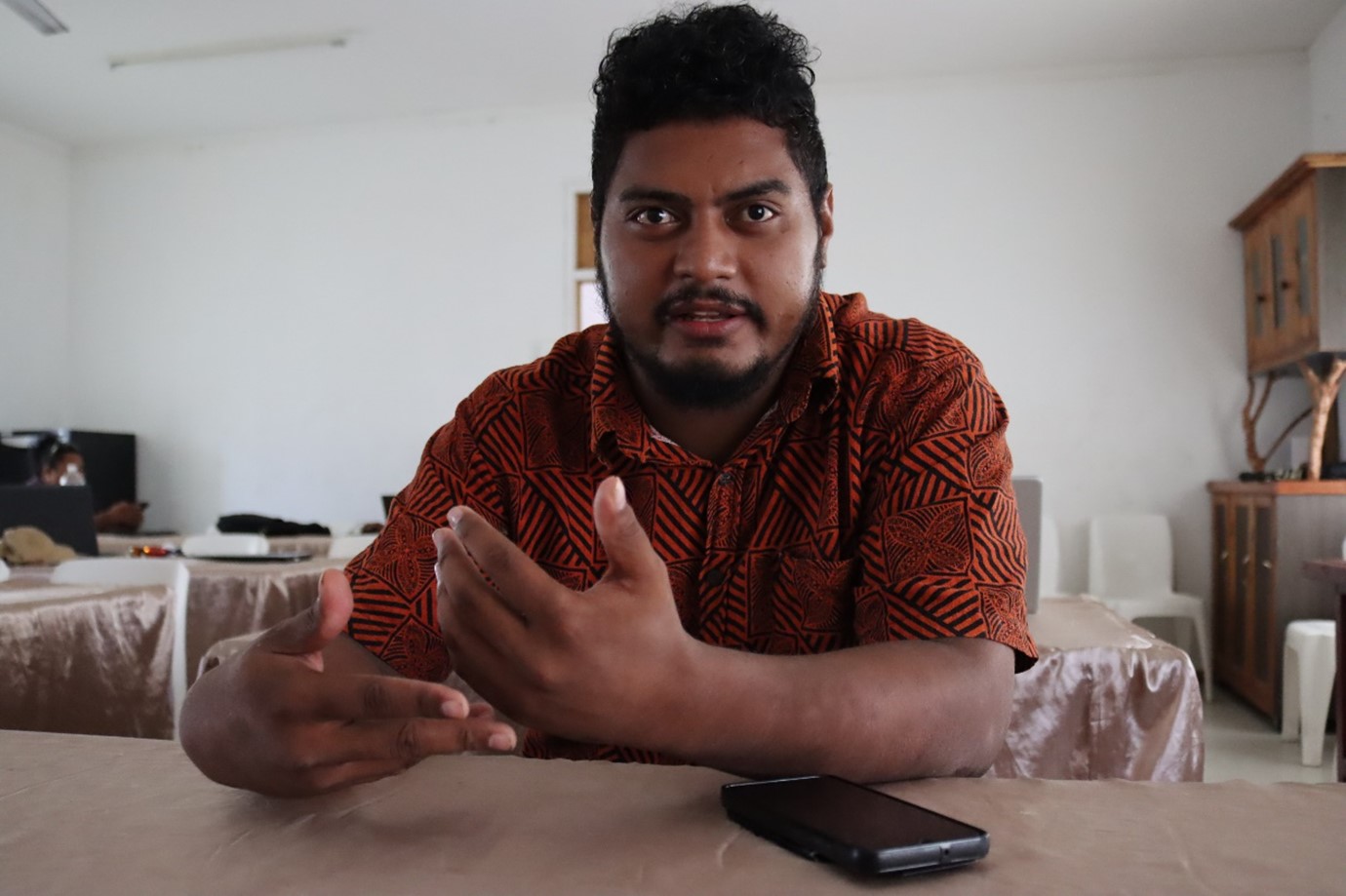
GIS officer at the MHMS and one of the participants of the workshop, Mr. Kamatie Tekena.
“It is beneficial for us as we are now capturing critical information, especially in relation to health outcomes. By having the GIS system, we can mitigate the spread of diseases,” said Mr. Tekena.
Along with the GIS system, information and communications technology hardware such as laptops and tablets were also handed over to the MHMS, and will be deployed to clinics and medical centers throughout the country.
UNDP and the MHMS are confident that this new initiative, which combines digital technology and geospatial insights, will not only enhance disease surveillance capabilities, but also will contribute to improving the broader public health landscape in Kiribati.
For further media enquiries please contact:
Ashna Kumar, Communications Associate, UNDP Pacific Office in Fiji – ashna.kumar@undp.org

 Locations
Locations

